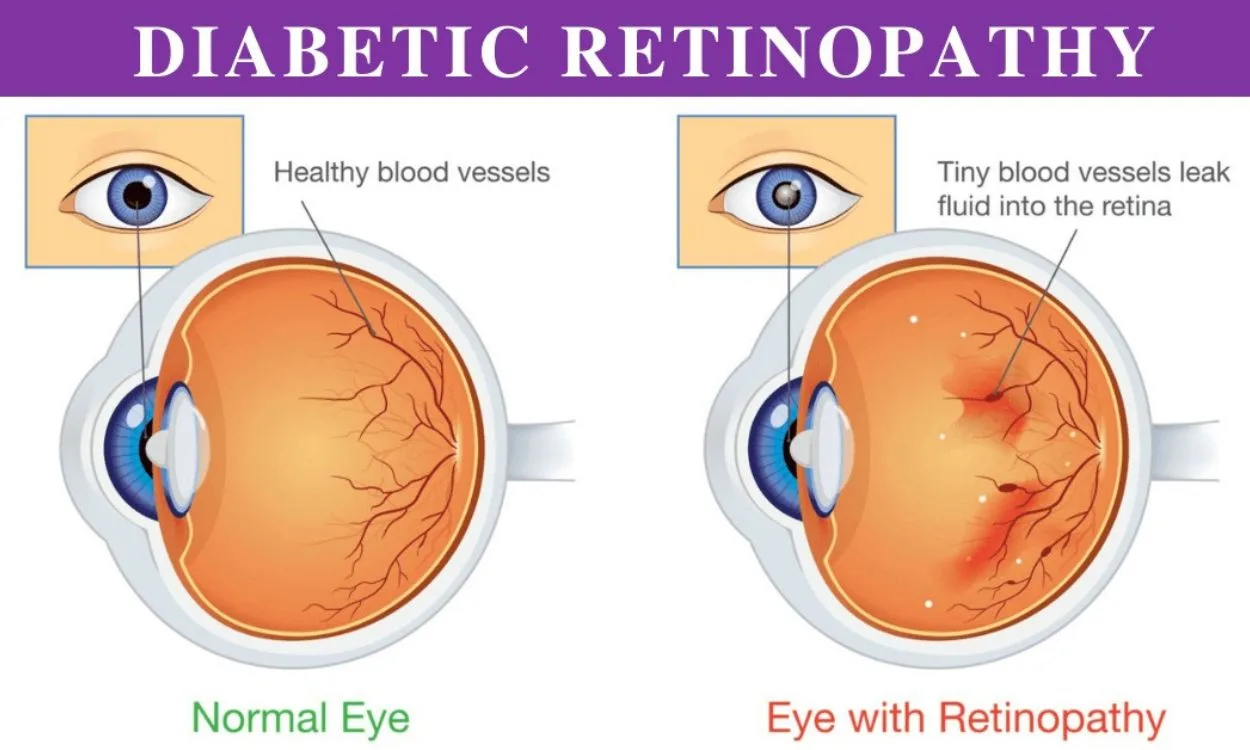What is Diabetic Retinopathy and How Can it be Prevented?
Diabetic retinopathy is a serious eye condition that affects people with diabetes. It occurs when high blood sugar levels damage the blood vessels in the retina, the light-sensitive tissue at the back of the eye. Over time, this damage can lead to vision loss or even blindness if left untreated.
Understanding Diabetic Retinopathy
Here are some key points to understand about diabetic retinopathy:
- Causes: Diabetic retinopathy is primarily caused by long-term diabetes. Chronic high blood sugar levels can weaken and damage the blood vessels in the retina, leading to various eye problems.
- Symptoms: In the early stages, diabetic retinopathy may not cause noticeable symptoms. However, as the condition progresses, individuals may experience blurred vision, floaters, dark spots, difficulty seeing at night, or even complete vision loss.
- Types: There are two main types of diabetic retinopathy: non-proliferative diabetic retinopathy (NPDR) and proliferative diabetic retinopathy (PDR). NPDR is the early stage, characterized by weakened blood vessels and small retinal swellings. PDR is the advanced stage, marked by the growth of abnormal new blood vessels, which can cause serious complications.
- Risk Factors: Several factors can increase the risk of developing diabetic retinopathy, including poor blood sugar control, high blood pressure, high cholesterol levels, pregnancy, and duration of diabetes.
Prevention and Management
While there is no guaranteed way to prevent diabetic retinopathy entirely, there are essential steps individuals can take to reduce their risk and manage the condition effectively:
- Control Blood Sugar: Maintaining good blood sugar control is crucial in preventing and managing diabetic retinopathy. Regular monitoring, adhering to a healthy diet, taking prescribed medications, and staying physically active can help keep blood sugar levels within a target range.
- Manage Blood Pressure and Cholesterol: High blood pressure and elevated cholesterol levels can further damage the blood vessels in the eyes. Managing these conditions through medication, lifestyle changes, and regular check-ups is essential.
- Attend Regular Eye Exams: Diabetic individuals should schedule comprehensive eye examinations at least once a year. These exams can detect early signs of diabetic retinopathy and allow for timely treatment.
- Quit Smoking: Smoking is detrimental to overall health, including eye health. Diabetic individuals should quit smoking to reduce the risk of developing or worsening diabetic retinopathy.
- Follow Treatment Plans: If diabetic retinopathy is diagnosed, it’s crucial to follow the recommended treatment plans provided by an ophthalmologist or retina specialist. Treatment options may include laser therapy, injections, or surgery, depending on the severity of the condition.
Fitpaa: Your Partner in Diabetes Management
As diabetes management plays a vital role in preventing and managing diabetic retinopathy, Fitpaa offers a comprehensive solution for individuals looking to achieve their health and fitness goals while effectively managing their diabetes.
Through Fitpaa’s AI-driven technology and personalized approach, individuals can benefit from:
- Metabolism Assessment: Fitpaa’s Metabolism Monitoring Technology helps identify the root cause of health conditions by assessing the individual’s current metabolism. Optimizing metabolism is crucial for achieving health and fitness goals.
- Fitpaa Capsule: Fitpaa’s expert team of fitness coaches, nutritionists, and doctors prepare personalized Fitpaa Capsules based on an individual’s metabolism, health goals, current lifestyle, and eating habits. The Fitpaa Capsules incorporate medical therapy, exercise therapy, nutrition therapy, and cognitive behavior therapy to optimize metabolism and achieve guaranteed results.
- Fitpaa Mobile App: The Fitpaa mobile app provides a range of tools and features, including virtual workout trainers, a diet tracker, performance tracking, and progress tracking. Fitpaa’s real-time guidance technology incorporates habit-building, timely nudging, and purpose-finding techniques from cognitive-behavioral therapy to inspire and motivate individuals throughout the day.
By combining the power of Fitpaa’s personalized approach, scientific methodologies, and a dedicated health and fitness team, individuals can effectively manage their diabetes while working towards their overall health and fitness goals.
If you’re ready to transform your life and experience the joy of achieving your health and fitness goals, download the Fitpaa app today and join our community of individuals dedicated to their well-being.









